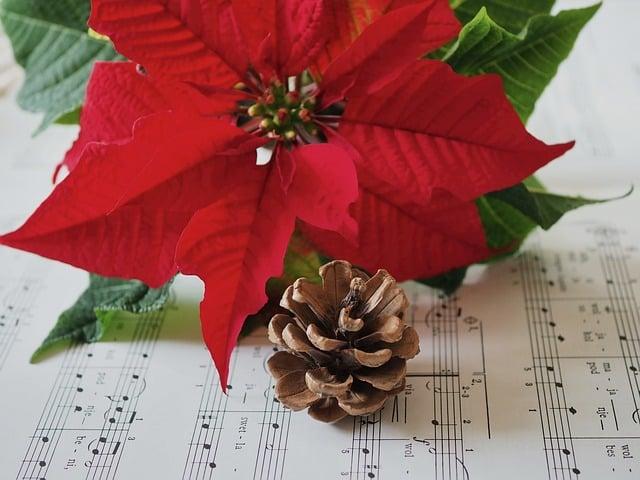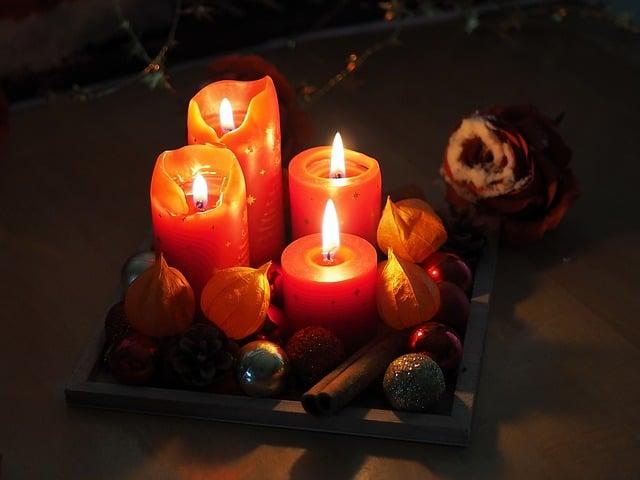In the early 19th century, a mother in Germany sought a way to make the days leading up to Christmas more magical for her children. Inspired, she crafted a simple calendar, marking each day with a small piece of chocolate. This delightful tradition spread, evolving into the colorful, numbered doors we know today. Each door opened not just to a treat, but to the anticipation of Christmas, weaving joy and excitement into the fabric of December. Thus, the advent calendar was born, a cherished symbol of countdown and celebration.
Table of Contents
- The Historical Origins of the Advent Calendar
- Exploring the Evolution of Advent Calendar Designs
- Cultural Significance and Traditions Surrounding Advent Calendars
- Crafting Your Own Advent Calendar: Tips and Ideas
- Q&A

The Historical Origins of the Advent Calendar
The advent calendar, a cherished tradition leading up to Christmas, has its roots in 19th-century Germany. It is believed that the first advent calendars were created by German Lutherans who sought to mark the days of Advent, the period of preparation for the celebration of the birth of Jesus Christ. These early calendars were simple, often consisting of chalk marks on doors or the use of small religious images that families would display. As the practice gained popularity, the calendars evolved into more elaborate forms, incorporating doors that could be opened to reveal a small gift or a scripture verse, enhancing the anticipation of the holiday season.
By the early 20th century, the advent calendar began to take on its modern form, thanks in part to the efforts of German printer Gerhard Lang. He is credited with producing the first printed advent calendar in 1908, which featured a series of doors that could be opened each day leading up to Christmas. This innovation sparked a wave of creativity, leading to the introduction of various themes and designs, including those adorned with festive illustrations and chocolates. Today, advent calendars come in countless variations, from traditional religious motifs to whimsical characters, reflecting the diverse ways in which people celebrate the countdown to Christmas.

Exploring the Evolution of Advent Calendar Designs
The advent calendar has undergone a remarkable transformation since its inception in the 19th century. Originally, these calendars were simple chalk marks on doors or walls, counting down the days until Christmas. As the tradition gained popularity, families began to create handmade versions, often incorporating religious imagery and scripture verses. This early form of the advent calendar was a way to build anticipation for the holiday, fostering a sense of community and shared faith. Over time, the designs evolved, becoming more intricate and visually appealing, reflecting the artistic styles of their respective eras.
In the modern age, advent calendars have taken on a life of their own, branching out into various themes and materials. Today, you can find calendars that feature:
- Chocolate and sweets – a delightful treat for children and adults alike.
- Beauty products – offering a daily surprise for skincare enthusiasts.
- DIY kits – encouraging creativity and hands-on activities.
- Personalized gifts – tailored to individual preferences and interests.
This evolution not only showcases the creativity of designers but also highlights the changing ways in which people celebrate the season, blending tradition with modern consumer culture.

Cultural Significance and Traditions Surrounding Advent Calendars
The advent calendar, a cherished tradition in many cultures, serves as a countdown to Christmas, enriching the festive season with anticipation and joy. Originating in the early 19th century, these calendars have evolved from simple chalk marks on doors to elaborate designs filled with treats and surprises. Each day leading up to Christmas is marked by opening a door or window, revealing a small gift, a piece of chocolate, or a meaningful scripture. This practice not only builds excitement for the holiday but also fosters a sense of community and shared experience among families and friends.
Across various cultures, the advent calendar has taken on unique forms and meanings. In some regions, it is common to include **religious symbols** or **nativity scenes**, emphasizing the spiritual significance of the season. Others may incorporate **local customs** or **folklore**, reflecting the diverse ways in which people celebrate. The tradition has also expanded beyond its Christian roots, with many secular versions available that focus on themes like kindness or self-care. Regardless of the specific design or contents, the advent calendar remains a beloved symbol of the countdown to Christmas, embodying the spirit of giving and togetherness.

Crafting Your Own Advent Calendar: Tips and Ideas
Creating your own Advent calendar can be a delightful way to count down to the festive season, allowing for a personal touch that store-bought versions often lack. Start by selecting a theme that resonates with you or your family—this could be anything from traditional holiday motifs to modern designs. Consider using materials like cardboard, fabric, or even repurposed items to craft your calendar. **Here are some ideas to inspire your creation:**
- Mini Gift Boxes: Decorate small boxes and fill them with treats or small gifts.
- Envelope Countdown: Use colorful envelopes to hide notes, activities, or surprises.
- Nature-Inspired: Create a rustic calendar using twigs, pinecones, and dried fruits.
- Interactive Calendar: Incorporate puzzles or challenges that reveal the day’s surprise.
Once you have your theme and materials, think about how to structure the calendar. You can opt for a simple linear design or a more intricate layout that encourages exploration. **Consider these tips for a successful Advent calendar:**
- Personalization: Add names or special messages to make each day feel unique.
- Variety: Mix up the contents—include treats, activities, and heartfelt notes.
- Interactive Elements: Incorporate games or crafts that can be enjoyed together.
- Countdown to a Big Event: Use the calendar to build excitement for a specific holiday celebration.
Q&A
-
Who invented the advent calendar?
The advent calendar as we know it today was popularized in the 19th century in Germany. However, its origins can be traced back to the early 19th century when families would mark the days of Advent with chalk on doors or by lighting candles.
-
What was the first advent calendar made of?
The first printed advent calendars were made of cardboard and featured small doors that could be opened to reveal images or Bible verses. These calendars were designed to help families count down the days until Christmas.
-
How did advent calendars evolve over time?
Initially, advent calendars were simple and religious in nature. Over time, they evolved to include various themes, illustrations, and even treats like chocolates, making them popular among children and families.
-
Are advent calendars used in other cultures?
While advent calendars are primarily associated with Christian traditions, similar countdown calendars can be found in various cultures, often adapted to fit local customs and celebrations.
As we close the door on the history of the advent calendar, we celebrate its evolution from simple beginnings to a cherished holiday tradition. Whether filled with chocolates or heartfelt messages, it continues to bring joy and anticipation to our festive seasons.

大家好,我是彼得潘,專業的手法身體治療師。我喜歡探索和研究各種主題,並透過與人工智慧的合作分享專業、實用、有趣的文章。我們定期進行人工審核,以確保內容的準確性。如果您發現文章中有任何不準確的地方,請隨時與我們聯繫,我們會及時糾正。您可以透過 [email protected] 與我們聯繫。



